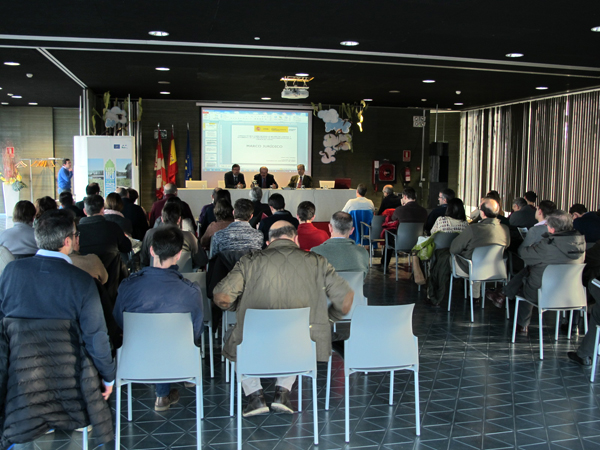Conference on the technicalities of controlling and monitoring of fish passage devices in the Duero basin and ways of improvement.

Fish migrations are necessary for the conservation of all Iberian species. Therefore, it is necessary to give priority to the elimination of obstacles and evaluate the effectiveness of the devices that need to be implemented. These actions, which realise a longitudinal continuity, are the most numerous river restoration actions and require a constant maintenance and monitoring work.
It is logical to think that when evaluating fish protection measures, a first step is to begin by addressing the hydraulic issues from the point of view of designing. This will allow the identification and solution of problems that affect the operation. Once the conflicting aspects-if they exist, have been identified and corrected, we proceed with the biological evaluation. However, in practice, due to the insufficiency of time and material as well as economic means, it is usually attended exclusively to the hydraulic and sizing variables as an approximate evaluation method to determine the efficiency of a fish passage.
For this reason, one of the objectives of the work carried out is to develop a manual as a tool that allows for the evaluation of the steps in a simple, fast and practical way; that can be used without the need of many special equipment and that requires little personnel. Likewise, it will allow to identify the problems presented in fish passage devices. This will result in an optimization of efforts and resources when carrying out steps for their adaptation.
The workshop was directed to technicians and was established in the installations of the Center for the Environmental Educational Resources in Valladolid (PRAE). The main objectives were:
- Intensification of the degree of knowledge and awareness about environmental problems related to the cross-through impediments positioned in the channels by evaluating negative actions and false restorations: Design of constructions which are compatible with the migration of fish.
- Pointing out the need for control as a phase of the administrative process: Even today we find a multitude of dams in use without any type of adaptation that allows the passage of the ichthyofauna, or when it exists, it is not functional.
- Analysing the necessary measures so that past mistakes are not repeated.
- List recommendations and good practices, both for the administration and for the concessionaires.
- Carry out a critical evaluation.
The programme of the technical conference was:
10:00 - 10:15 Presentation of the day [President DHC]
10:15 - 10:45 Legal Framework: Water Framework Directive. Regulation DPH and Natural Heritage Law of Castilla y León [Urbano Sanz Cantalejo; Deputy Commissioner, DHC]
10:45 - 11:00 Current state of fragmentation of the rivers [Ignacio Rodríguez Muñoz; Office of Hydrological Plantification, DHC)
11:00 - 11:30 Fish passages: Fundamental design and control variables [Javier Sanz Ronda; ITAGRA]
11:30 - 12:00 Coffee break.
12:00 - 12:30 Evaluation for fish passages in the Duero basin: First experiences [Javier Sanz Ronda; ITAGRA]
12:30 - 12:45 Evaluation of projects in the administrative processing phase [José María Rubio Polo; Head of Service, DHC]
12:45 - 13:00 Examples of step ways built in the Duero basin [José María Rubio Polo; Head of Service, DHC]
13:00 - 13:15 Monitoring of facilities and proper maintenance of fish step ways - Water Police [Arturo Prieto Blanco; Agent M.A., CHD)
13:15 - 13:45 Coordination between competent administrations [Ignacio de la Fuente Cabría; Head of Hunting and Fishing Service, General Directorate of the Natural Environment, Autonomous Government of Castilla y León and Urbano Sanz Cantalejo; Deputy Commissioner, CHD)
13:45 - 14:15 Discussion table - conclusions.
14:15 Closing


